In the formula DFP = ADD + CFP, CFP denotes?
What is a (are) valid example(s) of code data?
Which of the following statements regarding an application is (are) true?
Which transactional function cannot alter the behavior of the application?
What is the definition of "consistent state?"
The functional complexity of an EO is based upon which of the following?
Which of the following is the definition of derived data?
Which term used in FP calculations reflects the size of the functions being changed by the enhancement project - as they are / will be after implementation?
Which elementary process processes data or control information sent from outside the application's boundary?
What is a "user"?
Which category (ies) of data entities is (are) usually identified to satisfy the Functional User Requirements?
Which statement(s) is (are) true regarding mandatory processing logic for an EQ?
The Robot Automation Program (RAP) is an application which allows factory technicians to create and edit the weld placement programs for various robots on the assembly line. Both transactions maintain the Weld Specification and Robot logical files.
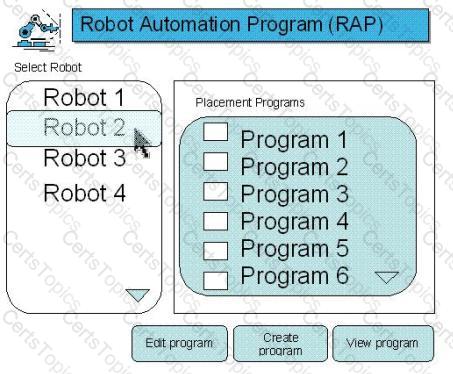
The use may select and view reboot details:
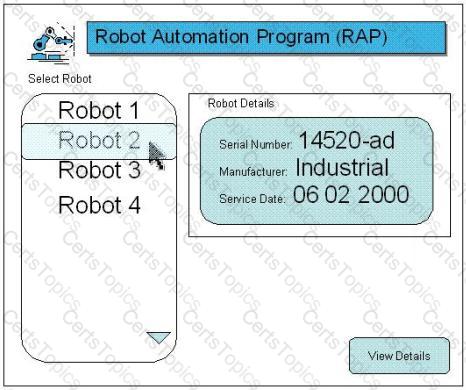
The user may print individual welding program details:
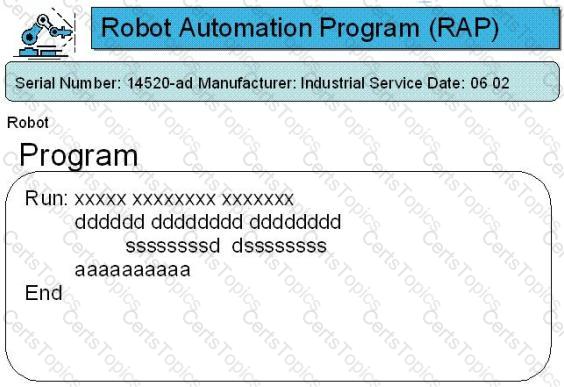
From the Names of Possible Functions listed identify the transactional functions for the RAP application. Select N/A if a Name of Possible Functions does not apply.
Identify the functions used:
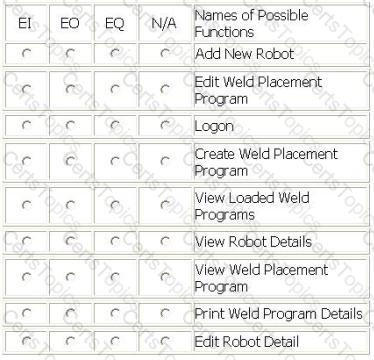
Data used by the Payroll Activity application is organized in the following logical groups:
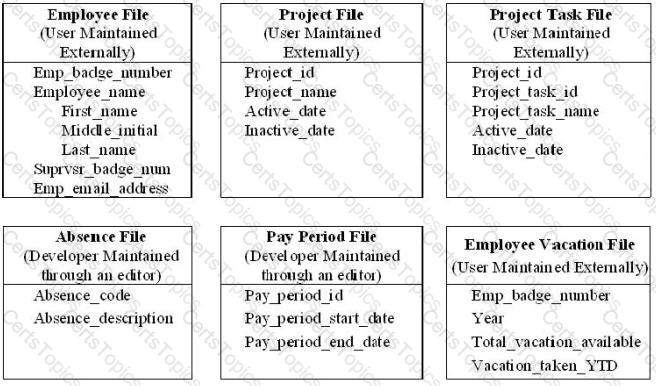
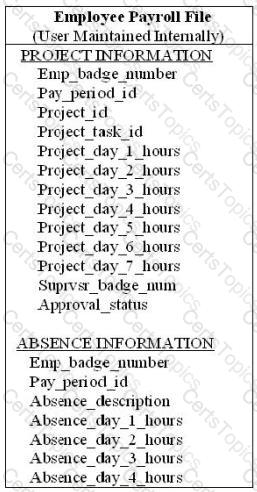
The Absence file and Pay Period file were implemented as part of the technical solution to facilitate business transactions.
From the Names of Possible Functions listed identify the data functions for the Payroll Activity application. Select N/A if a Name of Possible Function does not apply.
Identify the data functions used:
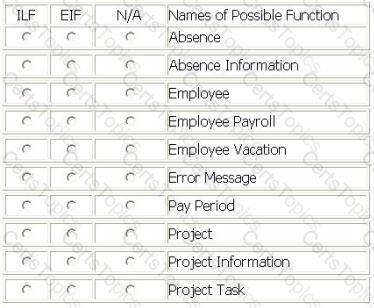
ALERT SYSTEM - ALERT NOTIFICATION
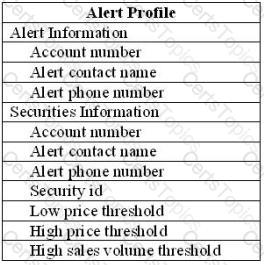
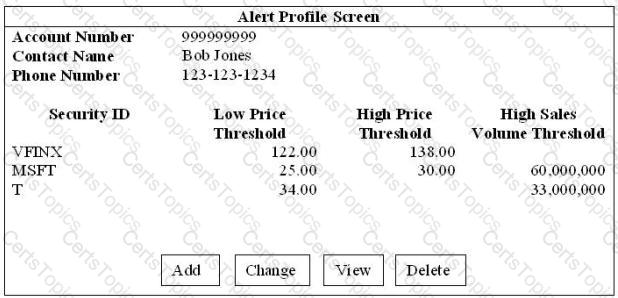
Select the complexity of each function:
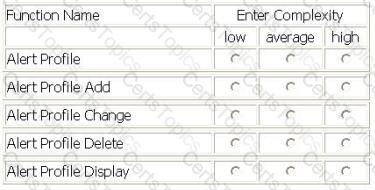
A Call Center (CC) application is being enhanced to track two new pieces of Information. The CC will reference the two new DETs in five modified data functions.
Determine the complexity of the following functions:
Select the complexity for each function:
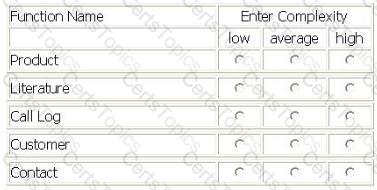
The High Point grocery store has implemented a frequent buyer program. Discounts on various products will be provided as an incentive for customers to register in the program. The Frequent Buyer (FB) application is being built to collect and store the customer information and to keep track of the purchasing patterns of the customers.
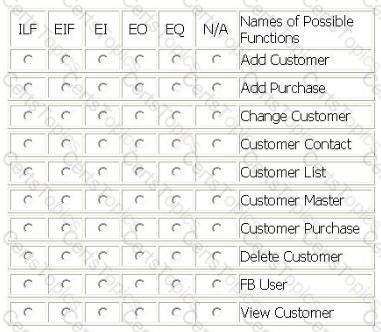
A Call Center (CC) application is being enhanced to maintain and display 2 new pieces of information. The CC will add the 2 new DETs to all 5 of the modified transactional functions.
What is the complexity of the transactional functions after the enhancement?
Select the complexity for each function:
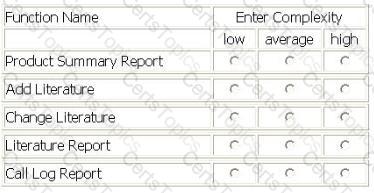
INTERNET APPLICATION (IA) -MAINTAIN INTERNET DATA
Determine the complexity of the data functions:
Determine the complexity of the following function:
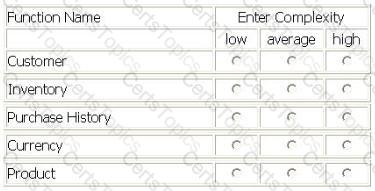
The Human Resources (HR) application contains 5 data functions.

Determine the complexity of data functions:
Select the complexity for each function:
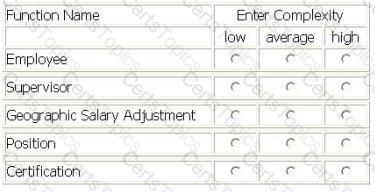
PAYROLL APPLICATION - MAINTAIN EMPLOYEE TIME SCREEN
PAYROLL APPLICATION - EMPLOYEE PROJECT ACTIVITY REPORT
Identify the functions used.
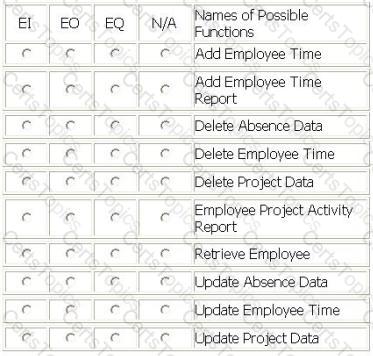
The Procurement application user requires the ability to control how and when reports are printed. The following list shows the specific user requirements for generating reports:
From the Names of Possible Functions listed identify the transactional functions for the Procurement application. Select N/A if a Name of Possible Function does not apply.
Identify the functions used:
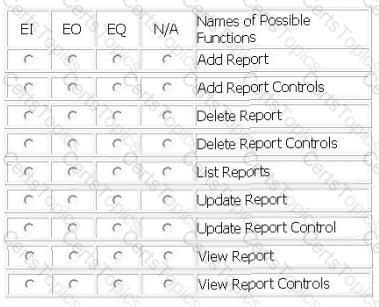
Determine the complexity of the data and/or transactions identified in the following scenario:
Determine the complexity for the following functions:
Select the complexity for each function:
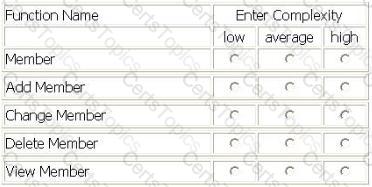
ITEM CHECK-OUT SCREEN
Identify the functions used:
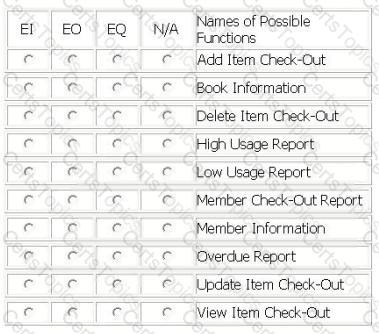
The Stock Purchasing (SP) and Point of Sale (POS) applications have the following requirements.
Identify the functions used:
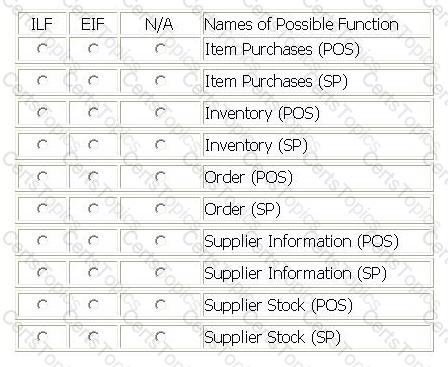
A transaction file contains records to maintain the Master file. A flag is included on each incoming record to indicate if the Master file record is to be added, changed or deleted. A batch job is developed to process the transaction file. How many transactional functions would be counted?
A Human Resources application has online field help for the add, change and delete transactions. The help facility is maintained by a separate application. How would the field help be measured for the Human Resources application?
An enhancement involves changing an EQ with 12 fields to include 3 extra fields. The EQ referenced 3 files before the change, and one extra file needs to be referred to as part of the change. How would the enhanced EQ be counted?
A database table is maintained by the application being counted. It has state code as the key attribute and state name as the only other attribute. How would this table be counted?
An enhancement adds 3 update screens to the application. Each of these screens updates 2 files and displays 17 data attributes. What is the functional size of the transactional functions after the enhancement?
An EO maintains 1 ILF and references 3 ILFs. What is the minimum number of DETs necessary for it to be valued at 7 UFP?
A Trading application introduces a new subsystem. The enhancement includes 6 new EIs, 3 modified EIs, 2 new EQs, 1 modified EO. 1 existing EO is eliminated from this application by this enhancement. There are 3 conversion EIs to convert existing data. All the transactional functions are average complexity. What is the functional size of the transactional functions for the enhancement?
How would you count the pie chart below?
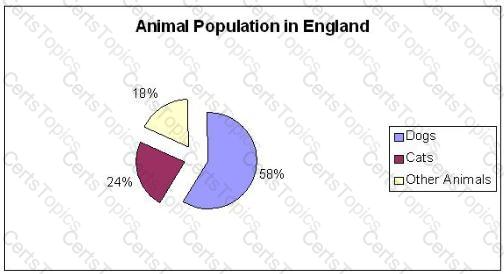
Which is (are) method(s) of sharing data?
A file of user maintained help messages is kept current using the business administrator functionality of the system. How would this help message file be counted?
Which can NOT be en EQ?